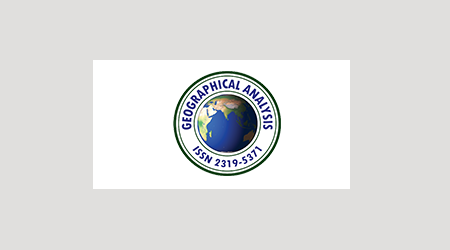
Geographical analysis
Department of Geography & GIS

Department of Geography & GIS

Geographical analysis
Year: 2014, Volume: 3, Issue: 2, Pages: 37-42
Original Article
Kamsali Nagaraja B.*, Manikiam**, Ganapathy Venkatasubramanian S.***
*Asst. Prof. Department of Physics, Bangalore University Bangalore.
**Sir M. Visweswaraya – ISRO Chair Professor, Bangalore University, Bangalore.
***Asst. Prof. Department of Physics, Bangalore University Bangalore.
The potential climate changes and possible adverse impacts on the economy and society at large are causing concern. In India, one of the major factors is the variability of monsoon rainfall and its impact on agriculture and water management. The effects of global warming on the Indian subcontinent vary from the submergence of low-lying islands, frequent flooding, coastal degradation and melting of glaciers in the Indian Himalayas. Climate-related natural disasters cause massive losses of Indian life and property. Droughts, flash floods, cyclones, avalanches, landslides brought on by torrential rains, and snowstorms pose the greatest threats. Other dangers include frequent summer dust storms with north westerly track causing extensive damage in North India. INSAT and IRS satellites in early 1980s heralded the era of Space observations. The IRS satellites are providing observations of parameters such as land use/cover, forest, water bodies, crops etc. while INSAT provides quantitative products. It may be necessary to adopt improved agriculture practices with resistant seeds, efficient water management. The satellite data is operationally used for climate change studies and long term database on vegetation, soil condition, rainfall, groundwater, land use, ocean temperature, ocean productivity etc. is being generated. Some of the unique studies include Mapping of Himalayan Glaciers, Biodiversity Mapping, Early Warning of Drought and Severe Weather Events. The paper presents details of the critical role played by satellite systems in climate change studies and modeling.
Keywords: remote sensing, climate change, reflectance, vegetation,
© 2014 This is an open-access article distributed under the terms of the Creative Commons Attribution License, which permits unrestricted use, distribution, and reproduction in any medium, provided the original author and source are credited.
Published By Bangalore University, Bengaluru, Karnataka
Subscribe now for latest articles and news.